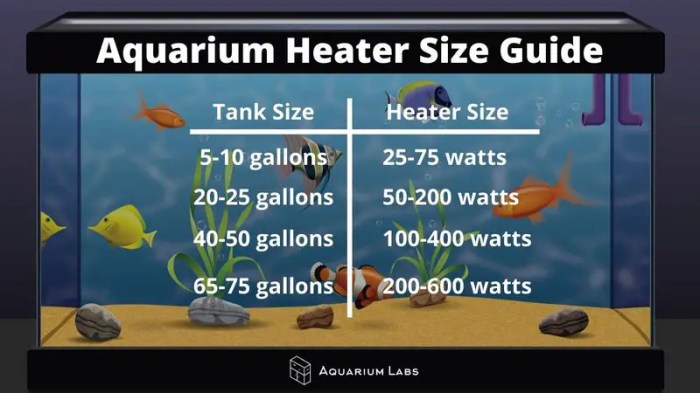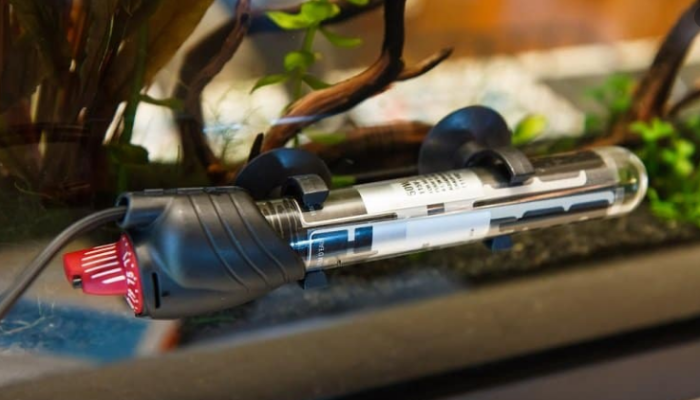How do I know if my aquarium heater is working? This question crosses the minds of many aquarium owners, especially when they notice their fish behaving strangely or when the water temperature seems off. Aquarium heaters are essential for maintaining the ideal temperature for your fish, but sometimes these vital components can malfunction, leaving your aquatic pets vulnerable to stress and illness.
This guide will equip you with the knowledge to diagnose and troubleshoot potential heater issues, ensuring your fish thrive in a comfortable environment.
Understanding how aquarium heaters work is crucial for effective troubleshooting. These devices are designed to maintain a specific temperature by heating the water to the desired level and then switching off when the target temperature is reached. Aquarium heaters come in various forms, including submersible, in-line, and adjustable models, each with its own unique features and benefits.
When choosing an aquarium heater, consider the size of your tank, the species of fish you house, and the desired temperature range.
Visual Inspection and Functionality Checks: How Do I Know If My Aquarium Heater Is Working

A visual inspection of your aquarium heater can often reveal signs of damage or malfunction, allowing you to address potential problems before they escalate. Additionally, a few simple checks can confirm whether the heater is properly plugged in and functioning as expected.
Visual Inspection
Start by carefully examining the heater’s exterior. Look for any signs of damage, such as cracks, dents, or corrosion. These issues can compromise the heater’s integrity and potentially lead to electrical hazards. Check the power cord for any fraying, cuts, or exposed wires, as these could indicate a faulty connection.
Power Supply Check
Make sure the heater is plugged into a working electrical outlet. You can confirm this by plugging in another device to the same outlet. If the other device works, the outlet is functional, and the problem might lie with the heater itself.
Thermostat Function Test
To test the heater’s thermostat, first, ensure the heater is submerged in water according to the manufacturer’s instructions. Next, set the thermostat to a desired temperature and observe the heater’s behavior. The heater should turn on when the water temperature drops below the set point and turn off when the temperature reaches the desired level.
You can use an aquarium thermometer to monitor the water temperature and verify that the heater is maintaining the set temperature. If the heater does not turn on or off as expected, it might indicate a malfunctioning thermostat or other electrical issue.
Water Temperature Monitoring

Accurately measuring your aquarium’s water temperature is crucial for the health and well-being of your fish. Even slight deviations from the ideal temperature range can cause stress, weaken their immune system, and lead to various health problems. Therefore, regularly monitoring the water temperature is essential.
A simple way to check if your aquarium heater is working is to use a thermometer. If the water temperature is consistently within the desired range, your heater is likely functioning properly. Of course, a healthy aquarium also needs engaging decorations, and you can find inspiration for creating your own by exploring how to make aquarium decorations.
Once you’ve added those decorative touches, you can relax knowing your fish are comfortable and thriving in their well-maintained environment.
Thermometer Calibration
To ensure the accuracy of your readings, it’s important to calibrate your thermometer. This process involves comparing your thermometer to a known standard, such as a digital thermometer with a high degree of accuracy.
- Obtain a Reference Thermometer:Acquire a digital thermometer known for its precision and accuracy. This thermometer will serve as your reference standard.
- Prepare a Water Sample:Fill a container with water and allow it to reach a stable temperature. Ideally, use a container large enough to accommodate both thermometers.
- Simultaneous Readings:Place both your reference thermometer and the thermometer you wish to calibrate in the water sample. Ensure both thermometers are fully submerged and allow them to stabilize for a few minutes.
- Compare Readings:Record the temperature readings from both thermometers. If there is a discrepancy between the two, note the difference.
- Adjust Calibration:If your thermometer requires calibration, follow the manufacturer’s instructions for adjusting the readings. Some thermometers have adjustable dials or settings for calibration.
Comparing Water Temperature Monitoring Methods
Various methods are available for monitoring aquarium water temperature, each with its advantages and disadvantages. The following table compares some common methods:
| Method | Description | Pros | Cons |
|---|---|---|---|
| Digital Thermometer | Electronic device that displays the temperature digitally. | Highly accurate, easy to read, and often features a range of temperature settings. | Can be more expensive than analog thermometers, requires batteries. |
| Analog Thermometer | Traditional thermometer with a liquid column that expands or contracts based on temperature. | Relatively inexpensive, no batteries required. | Less accurate than digital thermometers, can be difficult to read, especially in low-light conditions. |
| Temperature Strips | Adhesive strips that change color based on temperature. | Convenient and inexpensive, easy to apply. | Least accurate method, limited temperature range, color changes can be subjective. |
Troubleshooting Common Heater Issues
Even if you’ve followed all the steps to check your heater, it might still be malfunctioning. Here, we’ll explore some common problems and provide guidance on how to troubleshoot them.
Faulty Thermostat
A faulty thermostat is one of the most common reasons why an aquarium heater might not be working properly. The thermostat controls the temperature of the water by turning the heating element on and off. If the thermostat is malfunctioning, it might not be turning the heater on at all, or it might be turning it on and off too frequently.To troubleshoot a faulty thermostat, you can first try resetting it.
Unplug the heater from the power outlet and wait for a few minutes before plugging it back in. If this doesn’t work, you might need to replace the thermostat.
Broken Heating Element, How do i know if my aquarium heater is working
Another common issue is a broken heating element. The heating element is the part of the heater that actually heats the water. If the heating element is broken, the heater will not be able to heat the water at all.To troubleshoot a broken heating element, you can try checking the continuity of the element using a multimeter.
If the multimeter does not detect any continuity, the heating element is likely broken and needs to be replaced.
Power Outage
A power outage can also cause your aquarium heater to stop working. If there is a power outage, the heater will not be able to heat the water, and the water temperature will start to drop.To troubleshoot a power outage, you can check the power outlet to make sure it is working.
A simple way to check if your aquarium heater is working is to place a thermometer near it. If the water temperature is within the desired range, then your heater is likely functioning properly. However, if you’re dealing with water that’s too soft, you may need to consider adjusting its hardness.
This can be done by adding minerals like calcium and magnesium, which can be found in products specifically designed for this purpose. Learn more about how to make aquarium water harder here. Once you’ve addressed the water hardness issue, you can revisit the heater’s performance and ensure it’s consistently maintaining the optimal temperature for your aquatic inhabitants.
If the power outlet is working, you can try plugging the heater into a different outlet. If the heater still does not work, there might be a problem with the heater itself.
Other Potential Issues
Other potential issues that can cause an aquarium heater to malfunction include:
- Clogged Heater:Over time, mineral deposits can build up on the heating element, which can reduce its efficiency. Cleaning the heater regularly can help to prevent this problem.
- Incorrect Wattage:Using a heater with the wrong wattage for your tank size can lead to overheating or underheating. Make sure you are using the correct wattage heater for your aquarium.
- Damaged Wiring:Damaged wiring can also cause your heater to malfunction. Inspect the wiring for any signs of damage, and replace the wiring if necessary.
Preventing Heater Malfunctions

A well-maintained aquarium heater is essential for the health and well-being of your fish. By taking proactive steps to prevent malfunctions, you can ensure your heater operates reliably and consistently, providing a stable and comfortable environment for your aquatic companions.
Routine Maintenance for Aquarium Heaters
Regular maintenance is crucial for preventing heater malfunctions. Here’s a checklist of essential tasks:
- Clean the Heater Regularly:Accumulated algae, debris, and mineral deposits can hinder the heater’s performance and potentially lead to malfunctions. Clean the heater’s exterior with a soft brush and a solution of vinegar and water.
- Check the Thermostat Settings:Ensure the thermostat is set to the appropriate temperature for your fish species. Fluctuations in water temperature can stress fish and compromise their health.
- Inspect the Heater Cord and Plug:Look for any signs of damage, fraying, or loose connections. Damaged cords can pose a safety hazard and should be replaced immediately.
- Maintain Proper Water Level:Ensure the water level is above the heater’s minimum water line. Running a heater with insufficient water can cause it to overheat and malfunction.
- Replace the Heater Regularly:Aquarium heaters have a limited lifespan. It’s recommended to replace them every 2-3 years to ensure optimal performance and safety.
Choosing the Right Heater
Selecting a heater that’s appropriate for your aquarium’s size and the species of fish you keep is crucial. A heater that’s too small may not be able to maintain the desired temperature, while a heater that’s too large can overheat the water and harm your fish.
When selecting a heater, consider the aquarium’s volume, the desired temperature range, and the specific needs of your fish.
Closure
Maintaining a healthy aquarium environment requires vigilance, and regular inspection of your aquarium heater is essential. By following the steps Artikeld in this guide, you can confidently determine if your heater is functioning correctly and address any potential issues before they escalate.
Remember, a properly working heater is crucial for the well-being of your fish, ensuring they thrive in a comfortable and stable environment.